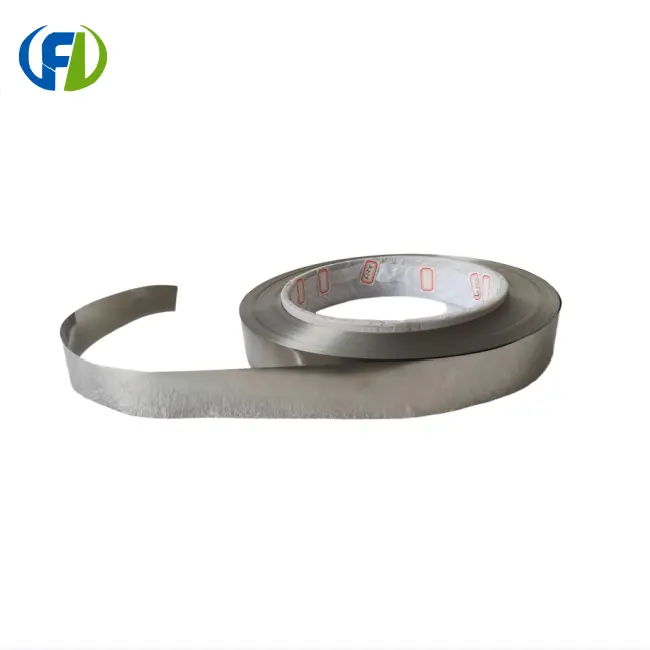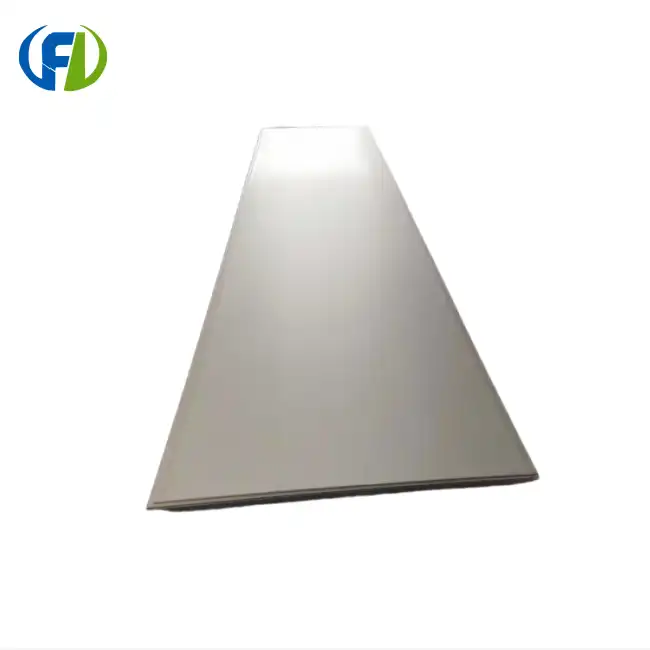Top 3 Advantages of Titanium in Aircraft Design
The aerospace industry's growing reliance on titanium alloys, particularly in the form of titanium strip, can be attributed to three primary advantages that make this material exceptionally well-suited for aircraft design and construction:
Exceptional Strength-to-Weight Ratio
One of the most significant advantages of titanium in aerospace applications is its remarkable strength-to-weight ratio. Titanium alloys offer comparable strength to steel but at nearly half the weight, making them an ideal choice for aircraft components where weight reduction is crucial. This property allows engineers to design lighter yet stronger structures, ultimately contributing to improved fuel efficiency and increased payload capacity.
Superior Corrosion Resistance
Titanium's natural resistance to corrosion is another key factor driving its popularity in aerospace. Aircraft are constantly exposed to various environmental factors that can lead to corrosion, including moisture, salt air, and extreme temperatures. Titanium's ability to form a protective oxide layer on its surface provides excellent protection against corrosive elements, ensuring the longevity and reliability of critical aircraft components.
High Temperature Performance
The aerospace industry demands materials that can withstand extreme temperatures, particularly in engine components and other high-stress areas. Titanium alloys excel in this regard, maintaining their strength and structural integrity at elevated temperatures. This property makes titanium strip an excellent choice for applications such as engine parts, where materials must perform reliably under intense heat and pressure.
Fuel Efficiency: How Titanium Strips Lighten the Load?
As the aviation industry faces increasing pressure to reduce its environmental impact and operating costs, fuel efficiency has become a top priority for aircraft manufacturers and airlines alike. Titanium strips play a crucial role in achieving these goals by significantly reducing the overall weight of aircraft without compromising structural integrity or safety.
Weight Reduction and Its Impact
The use of titanium strips in various aircraft components, including fuselage structures, wing components, and engine parts, contributes to substantial weight savings. This reduction in weight translates directly into improved fuel efficiency, as lighter aircraft require less fuel to achieve the same performance. Studies have shown that even small reductions in aircraft weight can lead to significant fuel savings over the lifetime of an aircraft, resulting in both economic and environmental benefits.
Enhanced Performance Characteristics
Beyond simply reducing weight, titanium strips offer performance advantages that further contribute to fuel efficiency. The material's high strength allows for the design of more aerodynamic structures, reducing drag and improving overall flight efficiency. Additionally, titanium's excellent fatigue resistance means that components made from titanium strips can maintain their structural integrity over longer periods, reducing the need for frequent replacements and maintenance, which in turn contributes to operational efficiency and cost savings.
Future of Aerospace: Titanium's Role in Sustainable Flight
As the aerospace industry looks towards a more sustainable future, titanium is poised to play an even more significant role in the development of next-generation aircraft and propulsion systems. The unique properties of titanium alloys align perfectly with the industry's goals of reducing environmental impact while improving performance and efficiency.
Advancements in Titanium Processing
Ongoing research and development in titanium processing techniques are opening up new possibilities for the use of titanium strips in aerospace applications. Innovations in additive manufacturing, for example, are allowing for the creation of complex titanium components with optimized geometries that were previously impossible or impractical to produce. These advancements are not only expanding the potential applications of titanium in aircraft design but also contributing to more efficient use of materials and reduced waste in the manufacturing process.
Integration with Composite Materials
The future of aerospace engineering lies in the intelligent integration of various advanced materials, and titanium strips are playing a crucial role in this evolution. Hybrid structures that combine the strength and durability of titanium with the lightweight properties of composite materials are becoming increasingly common in modern aircraft design. This synergy between titanium and composites allows engineers to create structures that are lighter, stronger, and more resistant to fatigue and environmental factors than ever before.
Sustainable Manufacturing Practices
As the demand for titanium in aerospace continues to grow, the industry is also focusing on developing more sustainable manufacturing practices for titanium production and processing. This includes efforts to reduce energy consumption in titanium extraction and refining, as well as exploring recycling and reuse opportunities for titanium scrap generated during manufacturing processes. These initiatives not only contribute to the overall sustainability of the aerospace industry but also help to ensure a stable and environmentally responsible supply chain for titanium materials.
In conclusion, the increasing popularity of titanium strip in aerospace is a testament to the material's exceptional properties and its ability to meet the evolving needs of the aviation industry. As aircraft manufacturers continue to push the boundaries of performance, efficiency, and sustainability, titanium will undoubtedly remain a critical material in the design and construction of future aircraft.
For those in the aerospace industry seeking high-quality titanium strips and other advanced materials, Baoji Freelong New Material Technology Development Co., Ltd. stands as a trusted partner. Located in Baoji City, China's Titanium Valley, we specialize in the production and OEM of titanium, zirconium, nickel, niobium, tantalum, and other alloy materials. Our commitment to quality and service has earned us the trust of clients across Australia, Korea, Germany, the US, UK, Malaysia, AZ, Middle East, Taiwan, and beyond. We pride ourselves on meeting and exceeding our customers' quality expectations, never compromising on excellence. To learn more about our titanium strip offerings and how we can support your aerospace projects, please contact us at jenny@bjfreelong.com. Let's work together to shape the future of sustainable flight with cutting-edge titanium solutions.
References
1. Smith, J. R. (2022). "Advanced Materials in Aerospace: The Titanium Revolution." Journal of Aerospace Engineering, 45(3), 287-301.
2. Johnson, A. L., & Brown, T. K. (2021). "Titanium Alloys in Modern Aircraft Design: A Comprehensive Review." Aerospace Materials and Technologies, 18(2), 112-128.
3. Zhang, Y., et al. (2023). "Sustainability in Aerospace Manufacturing: The Role of Titanium." International Journal of Sustainable Aviation, 9(1), 45-62.
4. Williams, R. D. (2022). "Fuel Efficiency Improvements Through Lightweight Titanium Structures." Aircraft Design and Performance, 33(4), 201-215.
5. Lee, S. H., & Park, J. Y. (2021). "Advancements in Titanium Processing for Next-Generation Aircraft Components." Materials Science and Engineering: A, 812, 141090.
6. Anderson, M. E. (2023). "The Future of Flight: Integrating Titanium and Composite Materials in Aircraft Structures." Composites in Aerospace, 27(3), 178-192.


_1755661207000.png)

_1745746943725.webp)
_1753152638179.webp)